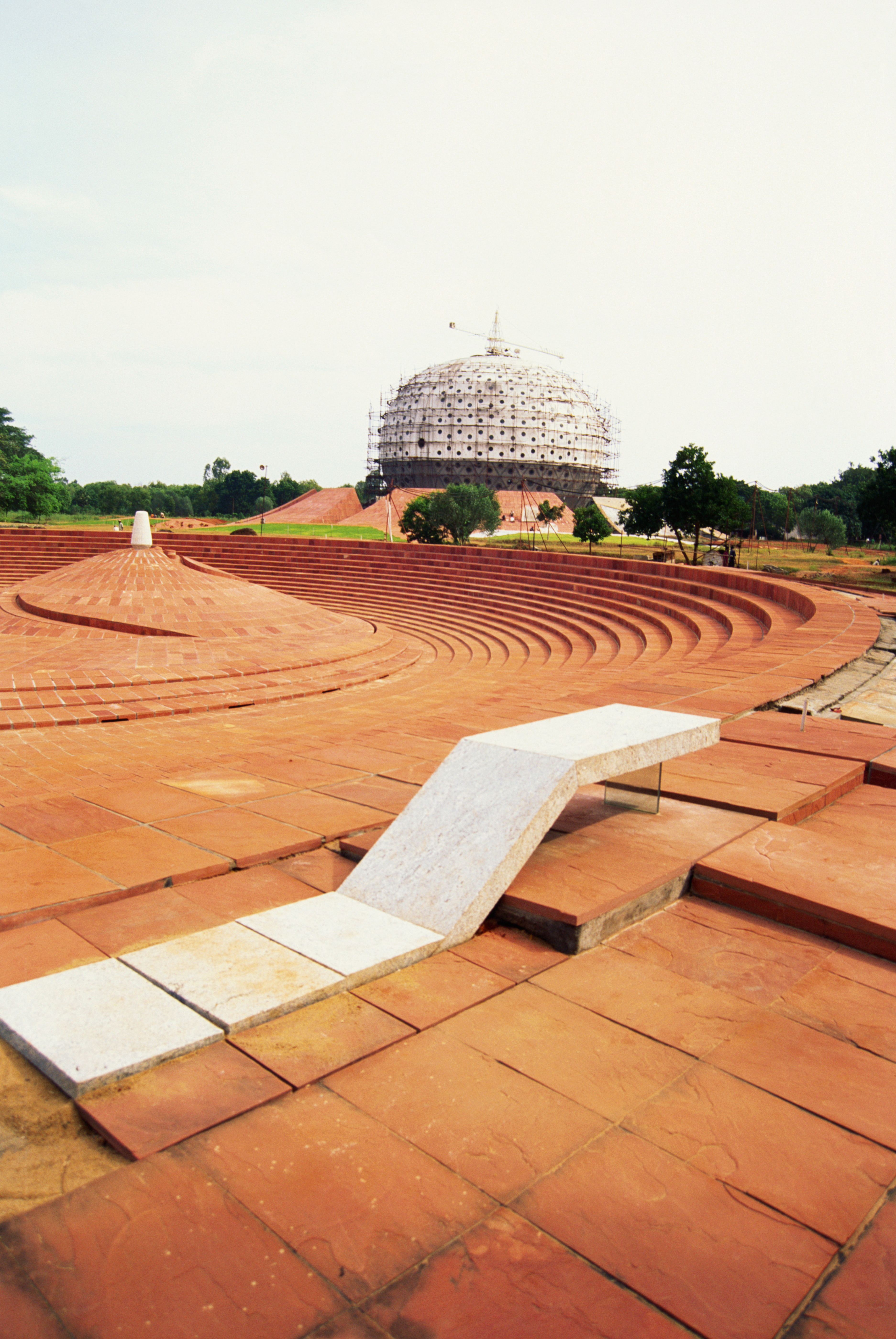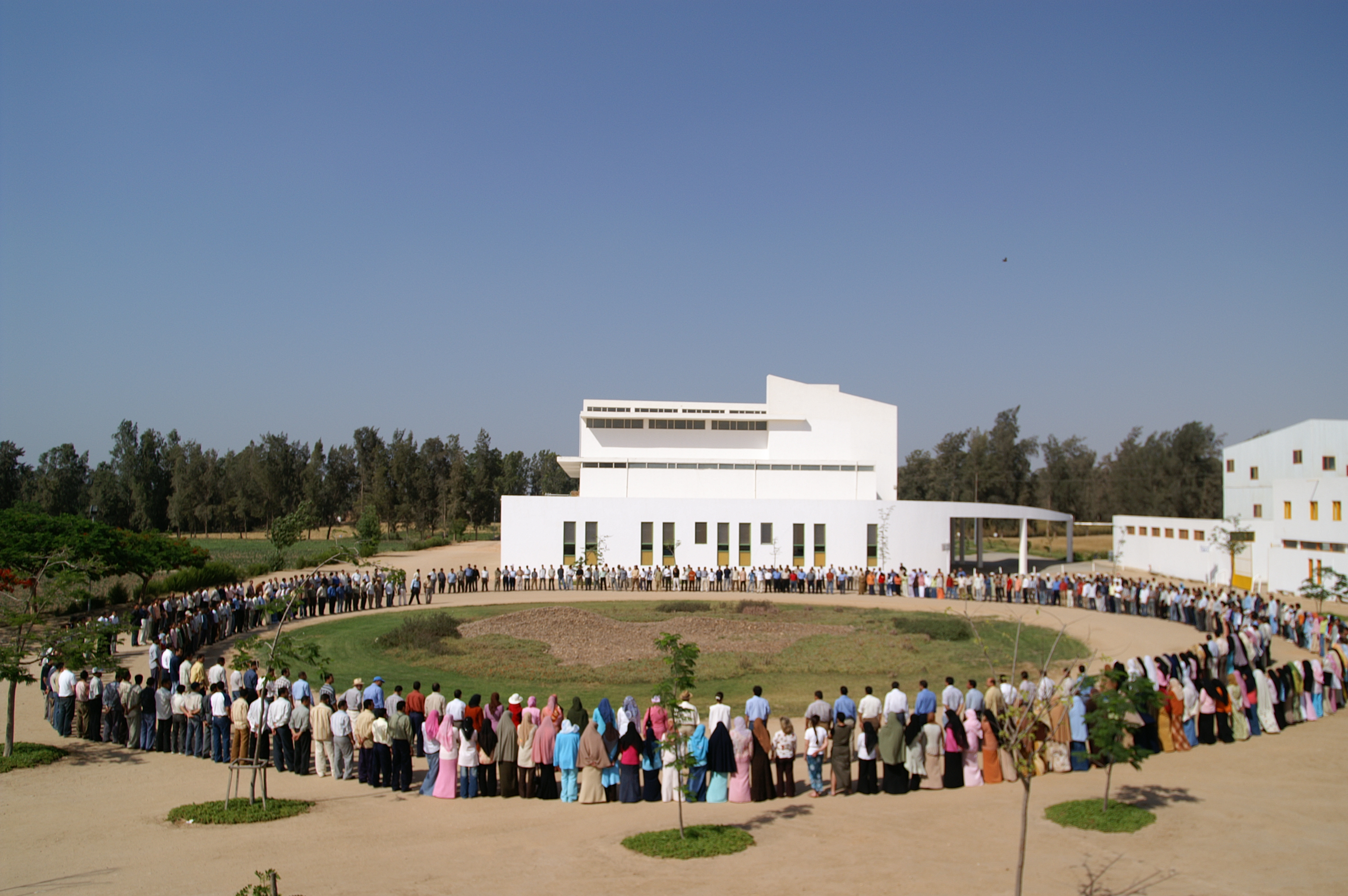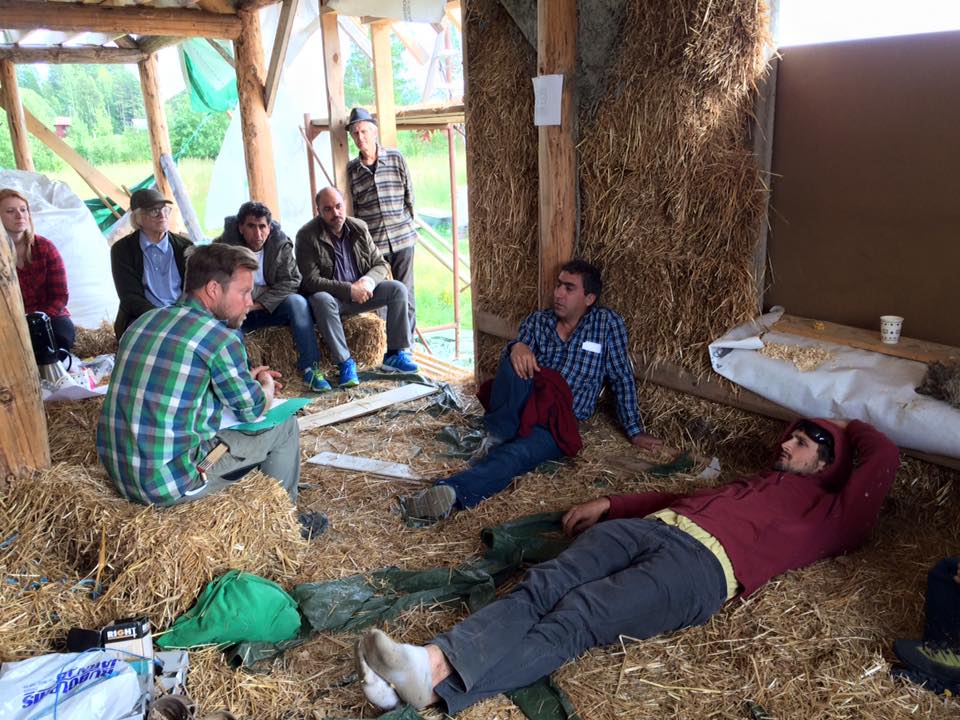Local solutions for global problems
By definition, an eco-village can be a traditional village community, part of a city, or a living community founded for this purpose. An eco-village in Europe or North America mostly comes into being because its inhabitants want to live healthier or more community-based lives. In the global south, in contrast, it is often a matter of survival: food autonomy, protection and survival in conflict regions, or about escaping poverty. In the process, worldwide cooperation through sustainability strategies has developed. We invite you on a journey to several different parts of the world.

Auroville, India – City of the Future
In 1968, on the Coromandel Coast of southern India, the Tasmanian Joss Brooks first heard the idea of a city of the future: Auroville. The idea soon attracted cultural refugees from all over the world: hippies and truth-seekers from America, Germany and France built themselves a different kind of life. Many people left the project again – the discrepancy with the poverty of the rural population was too big. But Joss remained. “We talk to old people who have great knowledge about medicinal plants. They sing while planting rice, they cooperate with plants and animals. Through them, we make contact with the soul of the forest that once grew here.”
Today, around 2,000 people from 40 countries live in Auroville. On what used to be a bare plateau, there are houses made of wood, clay and natural stone in the shade of many trees. Large solar power systems are used for cooking and generating electricity. A daily stream of tourists visits the Matrimandir, Auroville’s shrine.
Joss’s team planted a green belt of trees on 400 hectares and laid out approximately 1,000 km of ditches and earth banks to keep the rainwater on the land. For Joss, it is the forest growing back and not the Matrimandir that is Auroville’s shrine.
Meanwhile, specialists from Auroville have been helping the government to develop a sustainability plan for the whole region – in cooperation with local village residents. In the nearby million-strong city of Pondicherry, they have turned the municipal rubbish dump into a recreation area.
Joss: “In Auroville, people from all over the world are trying, together with local people, to find a sustainable path. The most important thing is to perceive the soul in everything – because it is in the soul that we find the memory of the garden of the future.”
www.auroville.org

Sekem, Egypt
While studying in Austria, Dr. Ibrahim Abouleish from Cairo discovered anthroposophy and returned with a grand vision: in the middle of the desert, he could see water, trees, animals and people flourishing. “Trees provide shade, the land becomes green, flowers exude their perfume, insects and birds show their devotion to the creator, as if they were reciting the first surah of the Quran.”
In 1977, he acquired a piece of land north of Cairo and had a borehole drilled. That is how Sekem started – today it’s an eco-village, a farm for medicinal herbs, organic cotton and cattle farming, a medical centre for the surrounding population, an alternative university, a school and several eco-industry and handicraft businesses.
Sekem brought the idea of organic agriculture to Egypt. Hundreds of farmers learned how to produce and market cereal crops, herbs and cotton without using any poisons. The idea of the camomile children is controversial but effective: as the rural population cannot do without what the children earn from working, Sekem employs children to pick camomile – for four hours a day. For the other half of the day they attend Sekem’s Waldorf school. Today, the project combines elements of Islamic and anthroposophic culture. Every morning, all the employees – be it farmers or managers – assemble for a morning circle: a symbol of the equality and wholeness of their vision.
Abouleish: “Sekem is a model of sustainable development for the whole world. We want to show that, through our work in all aspects of sustainability and our investment in training, we can compete with the best companies in the world.”

SICE, eco-village initiative for Syrian refugees in Sweden
Before the war, Fayez Karimeh from Syria, aged 43 and the father of three children, ran a forestation project in Yabroud. After neighbours kept destroying trees while searching for firewood, he looked for alternative sources of energy and on the internet found a guide to building a mini-biogas plant. He built a copy of it and in this way came into contact with the eco-village movement in Europe. When his town was destroyed by bombing, he took his family to a safe place in Syria and decided to go to Europe. In Tamera/Portugal, he was given a fixed-term job, which allowed him to leave the country legally.
“It was a culture shock,” he says. “I had never heard of eco-villages or healing biotopes. Coming from the war, I found a community that was trying to live free of violence in all respects.”
After three months, he travelled on to Sweden, the country he later chose to settle in, and decided to build an eco-village there for refugees. “Eco-villages for refugees have advantages for all sides,” he says when explaining his project at the University of Uppsala. “The refugees do ecological restoration for their host country, and at the same time they learn techniques that will later help them to rebuild their country.” It is especially important to Fayez that these techniques also include social skills. “The communities need knowledge about social understanding, basic democracy and conflict resolution.”
On 1st April 2015, he founded the association SICE – Syrian Initiative Craftsmanship Ecovillage. Since then, he has organised seminars in Swedish eco-villages on clay building, the processing of forest fruits and the construction of plant-based sewage treatment systems. Many Swedes support the idea, and two municipalities have applied to build the first refugee eco-village on their land.
www.ecovillage.nu
 Eco123 Revista da Economia e Ecologia
Eco123 Revista da Economia e Ecologia


